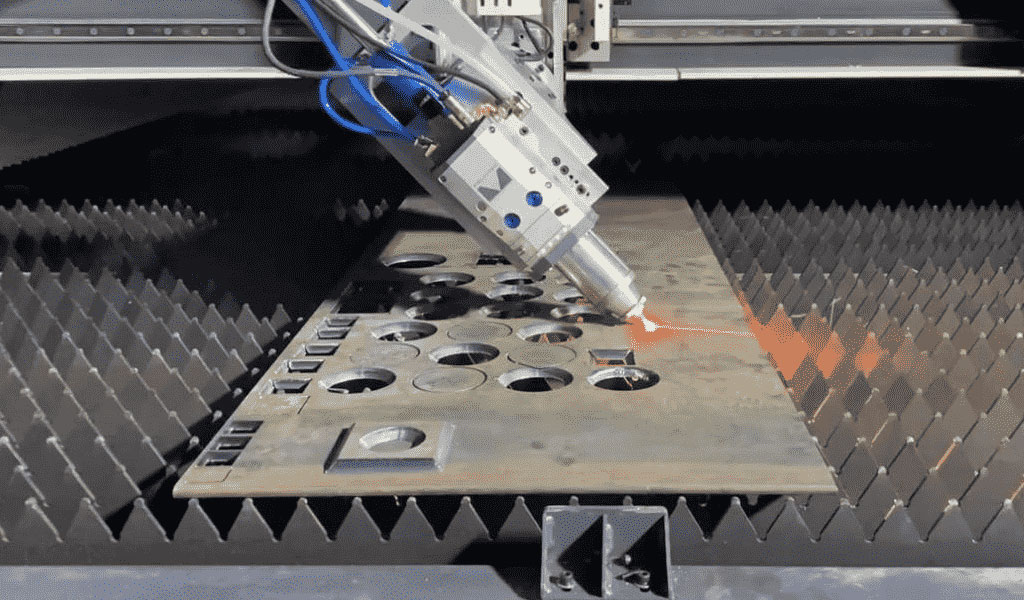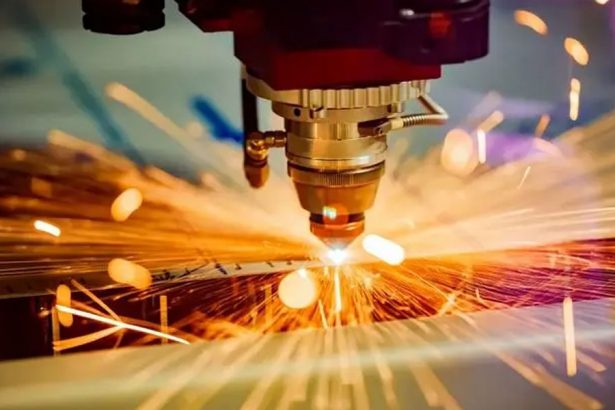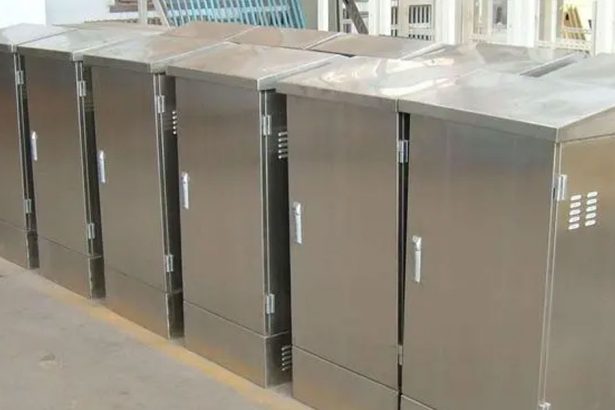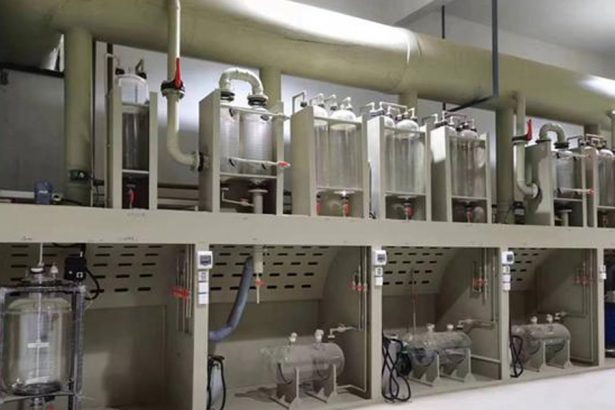NEMA 5 enclosures are a specific category within the broader range of NEMA (National Electrical Manufacturers Association) enclosures, which are designed to provide varying degrees of protection for electrical components and systems. The NEMA 5 rating indicates specific protective features that make these enclosures suitable for particular environmental conditions. Understanding the characteristics and applications of NEMA 5 enclosures is essential for ensuring the safety and longevity of electrical systems in various industries.
Overview of NEMA Standards
The National Electrical Manufacturers Association (NEMA) establishes standards for electrical equipment, including enclosures, to ensure consistent quality and performance. NEMA standards specify the degree of protection provided by an enclosure against various environmental hazards such as dust, water, and corrosive agents. These standards are widely recognized and utilized in North America and beyond.
NEMA Enclosure Types
NEMA enclosures are categorized into different types based on the level of protection they offer. The most common types include NEMA 1, 3, 4, 5, 6, 12, and 13. Each type has specific characteristics and is suitable for certain environmental conditions. NEMA 5 enclosures, in particular, are designed to provide a moderate level of protection against dust, dirt, and light water exposure.
NEMA 5 Enclosures: Characteristics and Specifications
NEMA 5 enclosures are defined by their ability to protect electrical equipment from a variety of environmental factors. They are commonly used in industrial and commercial settings where moderate protection is required.
Protection Against Dust and Dirt
One of the primary features of NEMA 5 enclosures is their ability to prevent the ingress of dust and dirt. This is crucial in environments where airborne particles could interfere with the operation of electrical components. The design of NEMA 5 enclosures typically includes gaskets and seals to ensure a tight closure, preventing dust and dirt from entering the enclosure.
Protection Against Water
NEMA 5 enclosures also provide protection against light water exposure. While they are not designed to be fully waterproof, they can withstand occasional splashes or light rain. This makes them suitable for outdoor installations where the enclosure may be exposed to the elements.
Construction Materials
NEMA 5 enclosures and NEMA 13 enclosures are constructed from a variety of materials, each offering different benefits. Common materials include:
- Steel: Provides strong physical protection and is often coated to resist corrosion.
- Stainless Steel: Offers excellent resistance to corrosion, making it suitable for harsh environments.
- Aluminum: Lightweight and resistant to corrosion, aluminum is often used in applications where weight is a concern.
- Plastic and Fiberglass: These materials are non-conductive and resistant to corrosion, making them ideal for certain applications.
Design and Features
The design of NEMA 5 enclosures includes several features to enhance their protective capabilities:
- Sealed Doors and Panels: Ensure that the enclosure remains tightly closed to prevent the ingress of dust and water.
- Ventilation: Some NEMA 5 enclosures include vents with filters to allow air circulation while keeping dust and dirt out.
- Mounting Options: Enclosures can be wall-mounted, floor-mounted, or pole-mounted, depending on the application.
Applications of NEMA 5 Enclosures
NEMA 5 enclosures are used in a wide range of industries and applications. Their versatility and moderate level of protection make them suitable for many different environments.
Industrial Applications
In industrial settings, NEMA 5 enclosures protect electrical components from dust and light water exposure. They are commonly used for housing control panels, circuit breakers, and other critical equipment. Industries such as manufacturing, food processing, and pharmaceuticals often utilize NEMA 5 enclosures to ensure the reliable operation of their electrical systems.
Commercial Applications
In commercial environments, NEMA 5 enclosures are used to protect electrical systems in settings such as office buildings, retail spaces, and public facilities. They provide a reliable level of protection against dust and light moisture, ensuring the safety and functionality of electrical installations.
Outdoor Applications
While not designed for harsh outdoor conditions, NEMA 5 enclosures can be used in locations where they may be exposed to occasional splashes or light rain. Examples include parking lots, outdoor lighting systems, and signage control panels.
Comparison with Other NEMA Enclosures
To better understand the specific advantages of NEMA 5 enclosures, it is helpful to compare them with other common NEMA enclosure types.
NEMA 1 Enclosures
NEMA 1 enclosures provide basic protection against dust and light impacts but do not offer any water protection. They are typically used indoors in clean, dry environments. Compared to NEMA 1, NEMA 5 enclosures offer additional protection against light water exposure, making them suitable for a wider range of applications.
NEMA 3 Enclosures
NEMA 3 enclosures provide protection against windblown dust and rain. They are often used outdoors but may not be suitable for environments with heavy water exposure. NEMA 5 enclosures offer similar protection against dust but are designed for lighter water exposure.
NEMA 4 Enclosures
NEMA 4 enclosures provide a higher level of protection, including resistance to hose-directed water and corrosion. They are suitable for harsher environments than NEMA 5 enclosures. NEMA 4X enclosures offer additional corrosion resistance. NEMA 5 enclosures are suitable for environments that do not require the higher level of protection provided by NEMA 4.
NEMA 6 Enclosures
NEMA 6 enclosures are designed for temporary submersion in water. They provide a higher level of water protection than NEMA 5 enclosures. Applications requiring this level of protection would not be suitable for NEMA 5 enclosures.
NEMA 12 and 13 Enclosures
NEMA 12 enclosures provide protection against dust, dirt, and dripping non-corrosive liquids. NEMA 13 enclosures offer similar protection but with a focus on protecting against oil and coolant seepage. NEMA 5 enclosures offer comparable dust protection but are not specifically designed for environments with oil or coolant exposure.
Installation and Maintenance of NEMA 5 Enclosures
Proper installation and maintenance of NEMA 5 enclosures are essential to ensure their effectiveness and longevity.
Installation Guidelines
When installing a NEMA 5 enclosure, it is important to follow best practices to ensure optimal protection:
- Mounting Location: Choose a location that minimizes exposure to dust and water. If outdoor installation is necessary, ensure that the enclosure is positioned to avoid direct exposure to heavy rain or splashing water.
- Sealing: Ensure that all doors and panels are properly sealed to prevent the ingress of dust and water. Check gaskets and seals for damage before installation.
- Ventilation: If the enclosure includes vents, ensure that filters are in place and clean to allow proper air circulation while preventing dust ingress.
Maintenance Practices
Regular maintenance is essential to maintain the protective qualities of NEMA 5 enclosures:
- Inspection: Regularly inspect the enclosure for signs of damage, such as cracks, corrosion, or seal degradation. Address any issues promptly to maintain the enclosure’s protective capabilities.
- Cleaning: Clean the enclosure regularly to remove dust and dirt buildup. Use appropriate cleaning methods based on the enclosure material to avoid damage.
- Seal Replacement: Replace gaskets and seals as needed to ensure a tight closure. Over time, seals can degrade, compromising the enclosure’s ability to protect against dust and water.
Standards and Certifications
NEMA 5 enclosures must comply with specific standards and certifications to ensure their performance and reliability. Key standards include:
- NEMA Standards: NEMA 250 is the primary standard that defines the requirements for enclosures, including NEMA 5. This standard specifies the tests and criteria that enclosures must meet to achieve a NEMA 5 rating.
- UL Certification: Many NEMA 5 enclosures are also certified by Underwriters Laboratories (UL). UL certification provides additional assurance of the enclosure’s quality and performance.
Conclusion
NEMA 5 enclosures provide a reliable level of protection for electrical components in a variety of industrial, commercial, and outdoor applications. Their ability to protect against dust, dirt, and light water exposure makes them a versatile choice for many environments. Understanding the characteristics, applications, and maintenance requirements of NEMA 5 enclosures is essential for ensuring the safety and longevity of electrical systems.
By adhering to NEMA standards and following best practices for installation and maintenance, users can maximize the effectiveness of NEMA 5 enclosures and protect their valuable electrical equipment from environmental hazards.

China Sheet Metal Fabrication Manufacturer
Custom precision metal fabrication services. Product specialties include UL® certified NEMA enclosures for various environmental conditions. Capabilities include punching, shearing, laser cutting, bending, machining, press brake forming, and welding. Materials worked with include mild steel, stainless steel, aluminum, brass, and more. Production volumes range from prototype to 10,000 pieces annually. Contract options include discrete orders, blanket orders, quarterly buys, and annual contracts. Value added services include inventory management, rapid prototyping, process development, design for manufacturability, inspection, supply chain management, transportation, and logistics. Industries served include aerospace, automotive, defense, electronic, electrical, entertainment, food and beverage, health, industrial automation, machinery, medical, oil, energy, power, sporting goods, telecommunications, transportation, and more.
using high quality materials
for your sheet metal parts orders
We uses a wide range of material selections for our sheet metal fabrication process. Among our materials are aluminum, stainless steel, brass, magnesium, copper, carbon steel, bronze, galvanized steel, and more. Each material is available in different grades and varieties. Rest assured that all the materials used for your sheet metal parts are durable, corrosion-resistant, long-lasting, rust-proof, wear-resistant, and high-performance. If you want a specific material to be used in the sheet metal fabrication process, don’t hesitate to contact us!
- Carbon Steel
- Stainless Steel
- Aluminum
- Brass
- Copper
- Magnesium
- Bronze
- Galvanized Steel
Why BE-CU is Trusted by 1000+ Clients
Our sheet metal fabrication covers a lot of benefits to many industries, businesses, or projects. Below are the advantages of our services.
- Affordable and Fast Production:We can quickly produce different sheet metal prototypes and final products. KDM offers speedy production while assuring high precision. Our high-volume production also allows us to have cost-effect sheet metal fabrication services.
- Excellent Strength to Weight Ratio:Through our advanced sheet metal fabrication, we can produce sheet metal parts that are lightweight yet durable. We assure high strength, scratch resistance, and corrosion resistance to all produced sheet metal products.
- Wide Range of Materials and Techniques Used:We are experts in different sheet metal fabrication techniques that allow us to produce complex parts with additional intricate features such as notches, slots, holes, etc. Our wide range of sheet metal materials can also withstand electrical, high heat, corrosion, and more.
Online Contact China Precision Sheet Metal Manufacturers
As a direct supplier of precision machined and finished complete components to all segments of the aerospace, semiconductor, automotive, and medical industries, including innovative high tech startups, BE-CU Sheet metal manufacturer is your trusted source for precision sheet metal fabrication services.
To learn more about our aluminum,stainless steel and other steel alloy sheet metal fabrication services, contact us, or give us a call at +86 153 8731 8440, and one of our expert associates will assist you. BE-CU is your trusted source for premium sheet metal fabrication services and metal spinning china manufacturer.




